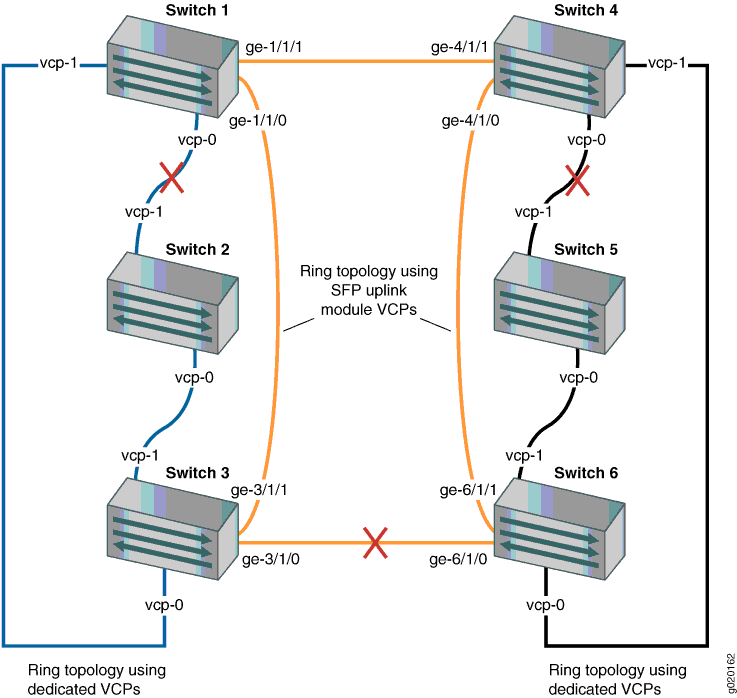

- EIGRP IP FAST REROUTE VS OSPF IP FAST REROUTE FULL
- EIGRP IP FAST REROUTE VS OSPF IP FAST REROUTE SERIES
- EIGRP IP FAST REROUTE VS OSPF IP FAST REROUTE TV
- EIGRP IP FAST REROUTE VS OSPF IP FAST REROUTE FREE
This fast convergence is made possible by EIGRP having a standby route to a network, and that standby route is ready to take over in the event the primary route fails. This typically happens in no more than 3 seconds. Fast Convergence: If a link goes down in a network, in many cases EIGRP can rapidly reroute around the link failure.Let’s being our EIGRP review by reminding ourselves of a few basic EIGRP characteristics: That’s my take, but I certainly won’t harbor any ill feelings for you if you’re on the “hybrid” side of the debate. Rather, EIGRP’s topology table lists available networks, along with information about the “distance” to those networks. EIGRP does not maintain a view of the network’s topology, nor does it run the Dijkstra Algorithm. These routers (speaking routing protocols such as OSPF and IS-IS) then run the Dijkstra Algorithm on that topology to determine the “shortest” path to a destination network from the perspective of a particular router. Here’s my reasoning: Consider the fundamental characteristic of a link state routing protocol, which is routers maintaining a topology table, indicating how routers are interconnected. While I was in the “it’s a hybrid routing protocol” camp for many years, recently I converted to the belief that EIGRP is an “advanced distance vector” routing protocol.
EIGRP IP FAST REROUTE VS OSPF IP FAST REROUTE FULL
At its essence, is EIGRP a link state routing protocol or a distance vector routing protocol? Or, is it a hybrid routing protocol (that is, a combination of both)? You’ll find lots of literature supporting the notion that EIGRP is a hybrid routing protocol, arguing that EIGRP neighbors initially exchange their full routing table, much like a distance vector routing protocol, and EIGRP only sends routing updates based on network changes, much like a link state routing protocol.

There’s a long-running debate about the fundamental nature of EIGRP. Therefore, this series of blog posts is going to review and reinforce those fundamental EIGRP concepts, and even introduce a few other fun facts.
EIGRP IP FAST REROUTE VS OSPF IP FAST REROUTE TV
However, unless you have an eidetic memory (like Sheldon Cooper on The Big Bang Theory TV show), you probably don’t remember every single EIGRP command and concept. If you already have your CCNA R/S certification (or higher), you’re probably well acquainted with EIGRP.
EIGRP IP FAST REROUTE VS OSPF IP FAST REROUTE SERIES
That’s the focus of this blog post, which is the first of a series of posts focusing on EIGRP. What was the routing protocol keeping all of these routers in agreement about available routes? It was Enhanced Interior Gateway Routing Protocol (EIGRP). Their massive network contained over 500 Cisco routers (and thousands of Cisco Catalyst switches).
EIGRP IP FAST REROUTE VS OSPF IP FAST REROUTE FREE
Eigrp has it's own Loop Free Alternate.I used to work as a Network Design Specialist at Walt Disney World, in Florida. The repair path installation is Forwarding Information Base (FIB). The repair path computation is done by the Intermediate System-to-Intermediate System (IS-IS) or OSPF and the resulting repair paths are sent to the Routing Information Base ( RIB). When a router is notified of a link failure, the router immediately switches over to the repair path to reduce traffic loss. We can use the IPv4 Loop-Free Alternate Fast Reroute feature to reduce the routing transition time to less than 50 milliseconds using a pre-calculated alternate next hop. This may impact on revenue of the customer also. Routing transition depends on the numbers of routers present in that area. Until the transition is complete and all routers are converged on a common view of the network, the connectivity between the source and destination pairs is interrupted. The time taken for computation is called routing transition. When a link or a router fails, routing algorithms like ISIS or OSPF compute new routes that take into account the failure. We can use the IPv4 Loop-Free Alternate Fast Reroute feature to reduce the Outages duration when the primary uplinks fail on a router.


 0 kommentar(er)
0 kommentar(er)
